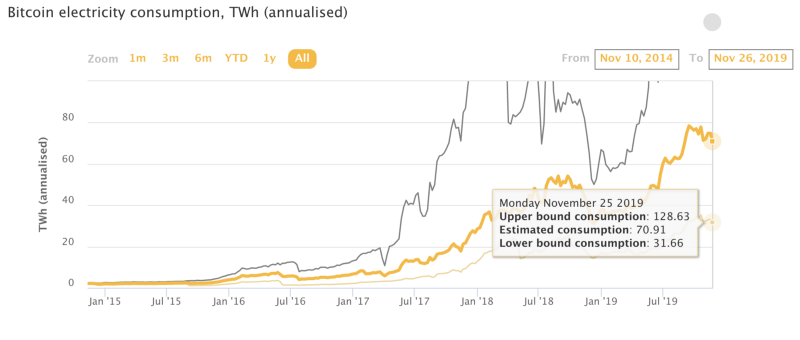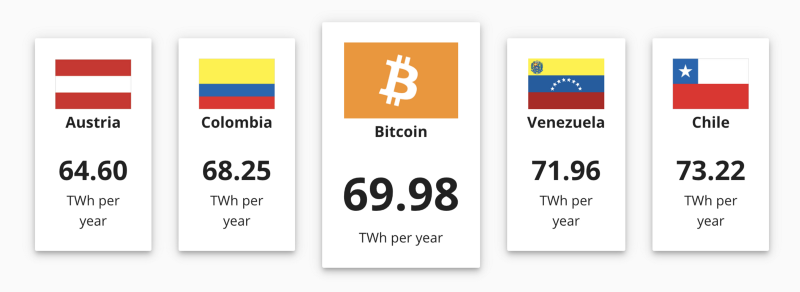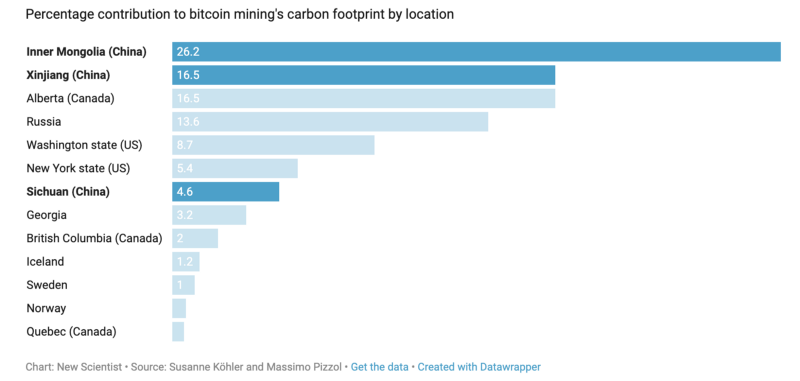Bitcoin’s Power Consumption Is Not Its Achilles Heel
Bitcoin is even compatible with the fight against global warming.

Since the emergence of Bitcoin in the eyes of the general public at the end of 2017, its detractors have constantly relied on the high electricity consumption required for the proper functioning of its Blockchain to criticize and denigrate it. According to these fierce opponents of Bitcoin, this electricity consumption of Bitcoin is its real Achilles heel that will prevent mass adoption by the general public in the future.
The problem is that the general public is now convinced that Bitcoin cannot go hand in hand with the fight against global warming. Thus, Bitcoin would not be good from an ecological point of view.
A recent study by Susanne Köhler and Massimo Pizzol at the University of Aalborg in Denmark contradicts what appear to be false assumptions. Indeed, the impacts of Bitcoin on the environment, and in particular the CO2 emissions induced by the operation of its Blockchain, would not be as catastrophic as claimed by its opponents.
I, therefore, propose that you return to a study that would confirm what Bitcoin advocates have been arguing for many months: Bitcoin’s electricity consumption is not its Achilles heel.
Bitcoin Is Based On The Proof-of-Work
The proper functioning of the Bitcoin Blockchain requires the validation of transactions carried out on the network. These are grouped into blocks that are validated at regular intervals. Each block being added after the previous one by miners who have managed to solve a kind of mathematical equation that is quite simplistic but whose resolution is very computationally intensive.
This consensus mechanism on which the Blockchain Bitcoin is based is called Proof-of-Work (PoW).
The difficulty of the mathematical equation to solve for a block of transactions to be undermined is periodically readjusted. Nevertheless, this difficulty tends to increase constantly except during prolonged bear markets as it was the case in 2018. At that precise moment, the difficulty decreased in front of the loss of financial interest of the miners for Bitcoin mining.

The almost uninterrupted growth in the difficulty of mining Bitcoins inevitably leads to an arms race on the part of miners to obtain ever more computing power.

In this way, they maximize their chance of receiving the famous reward shared between the miners who have validated a block of transactions in the Bitcoin Blockchain.
Currently, the reward for the miners is 12.5 BTC but it will decrease to 6.25 BTC in May 2020 following the third Bitcoin Halving.
This division of the reward given to miners will make the creation of new Bitcoins even rarer. This scarcity will inexorably increase the price of Bitcoin but also increase competition between miners who will continue to try to have ever more computing power available to be sure to validate the maximum number of transactions’ blocks.
The computational power of miners being obtained through the purchase of computer equipment specialized in Bitcoins mining. These are the famous Application Specific Integrated Circuits better known by the acronym ASICs.
Bitcoin Mining Induces High Power Consumption
The phenomenal computational power required to validate a transaction’s block on the Bitcoin Blockchain result in very high power consumption. According to the Bitcoin electricity consumption index maintained by the Cambridge Centre for Alternative Finance, Bitcoin consumes 70 Terawatt-Hours per year to ensure the reliability and security of its network.

This electricity consumption places the Bitcoin Blockchain just above Colombia, a country with a population of 48 million.

While this electricity consumption is already a problem in itself for many opponents of Bitcoin, what bothers most is the estimate made by some that the emissions resulting from this consumption would be in the order of 63 megatonnes of CO2 per year.
This annual estimate of Bitcoin’s CO2 emissions has led some researchers to argue that Bitcoin alone could break global targets for combating global warming.
CO2 Emissions From The Bitcoin Blockchain Have Been Overestimated
The picture I have just painted so far is not very bright for Bitcoin. However, the study made by Susanne Köhler and Massimo Pizzol invalidates all these hypotheses concerning Bitcoin’s CO2 emissions.
Indeed, previous estimates are based on the assumption that carbon dioxide emissions from power generation are uniform across China.
Just over half of all Bitcoins’ mining activities take place in China. By focusing on China’s CO2 emissions at a more regional level, all the assumptions made previously have been significantly reduced.
As a result, Bitcoin-related CO2 emissions for 2018 have fallen to 17 megatonnes.
In concrete terms, it appears that the Inner-Mongolia region, which represents 12.3% of Bitcoins’ mining activities, generates its electricity from heavy coal, which means that it accounts for just over a quarter of total Bitcoin mining’s carbon footprint.

On the other hand, the Chinese province of Sichuan, which generates its electricity mainly from hydroelectric power, has seen its share of total Bitcoin-related CO2 emissions fall to 4.6%.
Bitcoin Is Fully Compatible With The Fight Against Global Warming
This new study therefore undermines the argument that opponents of Bitcoin constantly oppose it, namely its anti-ecological aspect. Of course, not everything is idyllic since electricity consumption is indeed high.
Nevertheless, it is worth noting that it is the fact that Bitcoin consumes so much energy that gives it such value in reality.
If Bitcoin mining wasn’t so resource-intensive, it would probably have no value. This is therefore a good thing for Bitcoin and its future.
The main information to remember is that Bitcoin is not incompatible with the fight against global warming, which allows it to be clearly part of the world’s future.
This study also highlights the fact that the production and destruction of computer equipment required for mining represents only 1% of Bitcoin’s CO2 emissions.
This study, which I hope will reconcile ecologists with Bitcoin, is in addition to another very positive study for Bitcoin published in June 2019 by CoinShares, according to which 74.1% of mining activity is powered by electricity from renewable energies.
The Bitcoin’s electricity consumption is therefore not its Achilles heel, as I have just shown you, based on the study by Susanne Köhler and Massimo Pizzol. Opponents of Bitcoin will have to change their minds in the future.







